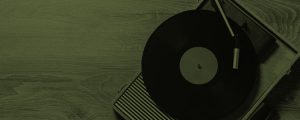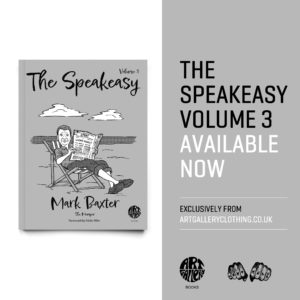
I was gifted my copy of Afro-Harping by Dorothy Ashbee by a mate, who picked it up for me in the States whilst he was away on tour. We had been talking about it prior to him leaving, as I had just discovered a few tunes from it via YouTube. I was amazed by the technical ability I was hearing, but also to hear that Dorothy had her harp grooving’, which is not a sentence I ever expected to write down.
She was born Dorothy Jeanne Thompson on August 6th, 1932, in Detroit, Michigan, and began her musical adventures at a young age. Her father Wiley, a jazz player himself, recognised the talent within her, resulting in him enrolling Dorothy in piano tuition. Later, when attending Cass Tech. School from age 11 – along with fellow students, future guitar great Kenny Burrell and trumpet legend Donald Byrd – Dorothy saw a harp for the first time.
Fascinated by its elegance and the ethereal sound it produced, she was determined to learn how to play it. Although the harp was an unconventional choice for a young African American girl from Detroit, Ashby was undeterred by societal expectations or limitations. She embraced the instrument with an unwavering passion and dedication, being taught by Velma Froude, in the classical style, heavily influenced by French harpist Carlos Salzedo.
As she honed her skills, Ashby found inspiration from diverse musical sources, including classical composers, jazz legends, and the rich tapestry of African and Middle Eastern music. She immersed herself in these various genres, blending their distinct flavours into her unique style. Combining traditional jazz with elements of blues, funk, soul, and world music, Ashby crafted a sound that was both enchanting and ground-breaking.
After graduation, she played piano on the jazz scene at first, before then releasing the harp as her instrument of choice. In 1952, Dorothy Ashby made her recording debut with the Jazz Messengers, led by influential drummer Art Blakey. This marked the beginning of a fruitful career that would span over three decades. Ashby’s virtuosity on the harp added a new dimension to the jazz ensemble, providing a fresh voice within the improvisational landscape. Her ability to seamlessly integrate the harp into the rhythmic and harmonic structures of jazz was nothing short of remarkable.
She also led her own trio, which included her husband John, on the drums. Ashby’s trio regularly toured the country, recording albums for several record labels. In 1962, Ashby also picked up Down Beat magazine’s critics’ and readers’ awards for best jazz performer.
Her numerous albums include the notable titles The Jazz Harpist (1957) Hip Harp (1958) Afro-Harping (1968) and The Rubaiyat of Dorothy Ashby (1970) These records showcased her versatility and musical adventurousness, as she fearlessly explored new sonic territories. With her unique style, Ashby attracted a dedicated following and gained recognition from both critics and fellow musicians.
Beyond her technical prowess, Dorothy Ashby’s musicality extended beyond the boundaries of jazz. She went on to collaborate with artists such as Stevie Wonder, Bobbi Humphrey, Minnie Riperton, Freddie Hubbard, Bill Withers, Billy Preston, Dionne Warwick, Earth Wind & Fire, Diana Ross and Bobby Womack among many others, leaving her mark on a wide range of musical genres. Her ability to blend the harp’s delicate tones with various musical styles was a testament to her innovative spirit and artistic vision.
Sadly, cancer claimed on April 13th, 1986 aged just 53. Despite that young age, her contributions to jazz and her ground-breaking exploration of the harp’s potential, continue to inspire musicians of today. Her impact also extends beyond her role as a musician; she was a trailblazer who shattered stereotypes and opened doors for future generations. As an African American woman in a male-dominated field, her success paved the way for other women to pursue their musical dreams fearlessly.
‘It’s been maybe a triple burden in that not a lot of women are becoming known as jazz players. There is also the connection with black women. The audiences I was trying to reach were not interested in the harp, period—classical or otherwise—and they were certainly not interested in seeing a black woman playing the harp.’
In recognition of her contributions, Dorothy Ashby was posthumously inducted into the Michigan Women’s Hall of Fame in 2002. Her legacy serves as a reminder that innovation and artistry know no boundaries.
Through her remarkable talent, she changed the perception of the harp and left an indelible mark on the world of jazz. Her music continues to captivate audiences, often by the use of samples of her music being used in new recordings, which ensures that her name and legacy will live on for generations to come.
The Mumper of SE5
Read The Mumper’s other weekly musings on ‘The Speakeasy’ blog page
ART GALLERY CLOTHING
Knitwear – Use Promo Code agc10spk for a 10% Discount

THE SPEAKEASY VOLUME 3 – AVAILABLE NOW
THE SPEAKEASY Volume Three by Mark Baxter (The Mumper)
Illustrations by Lewis Wharton
Foreword by Eddie Piller
Available to ORDER exclusively in the Art Gallery Clothing SHOP
JOIN US
Sign up to our newsletter and receive an exclusive promo code, latest news & Art Gallery Clothing offers.



